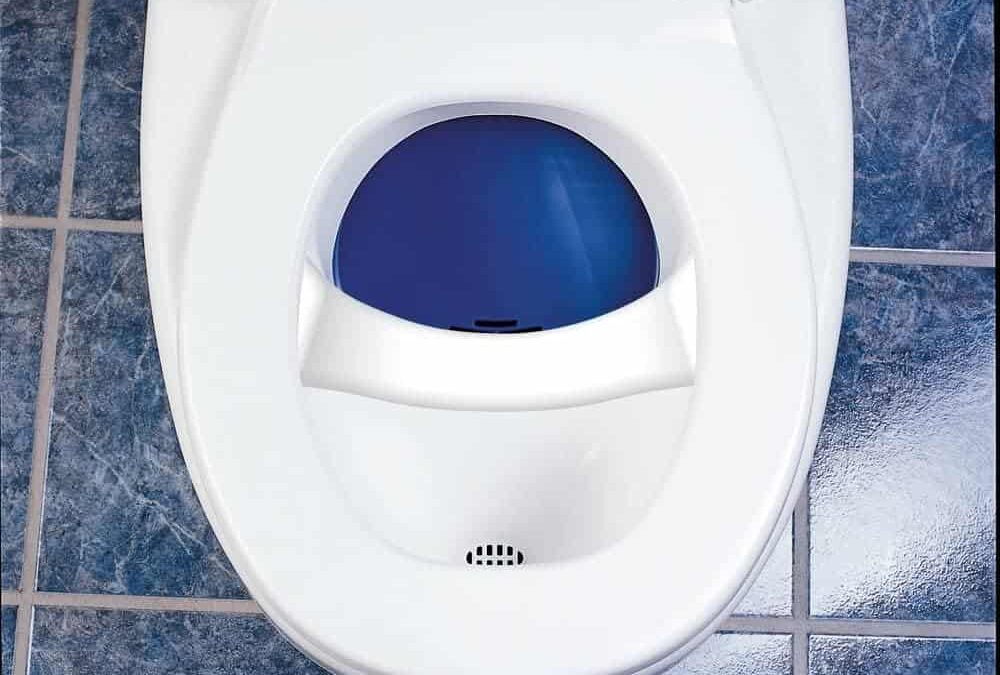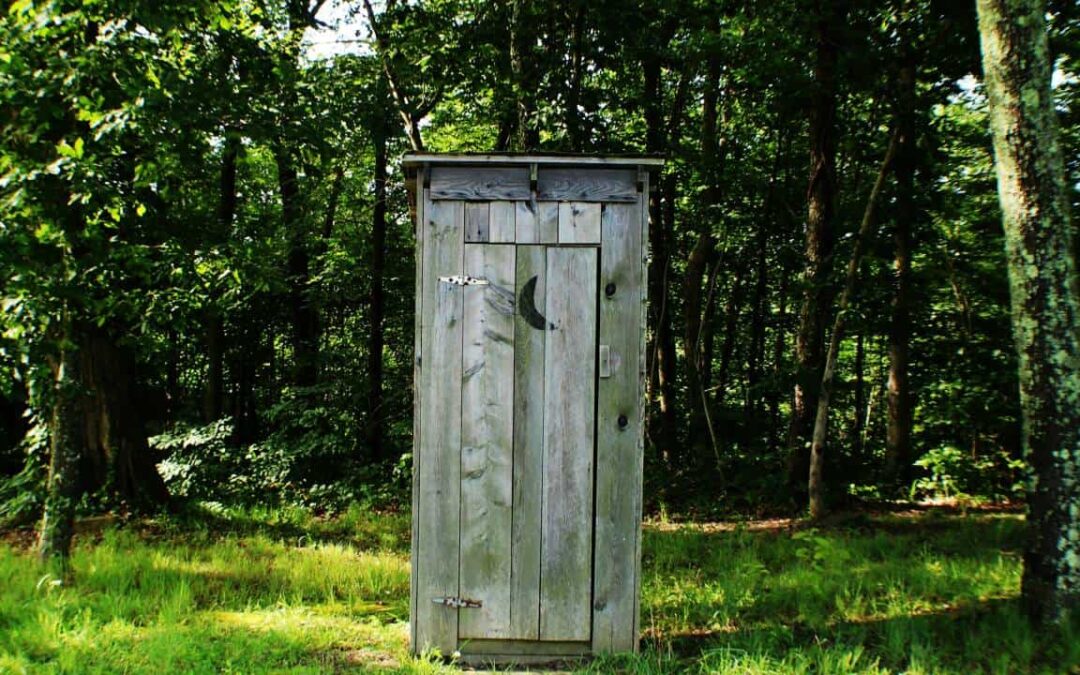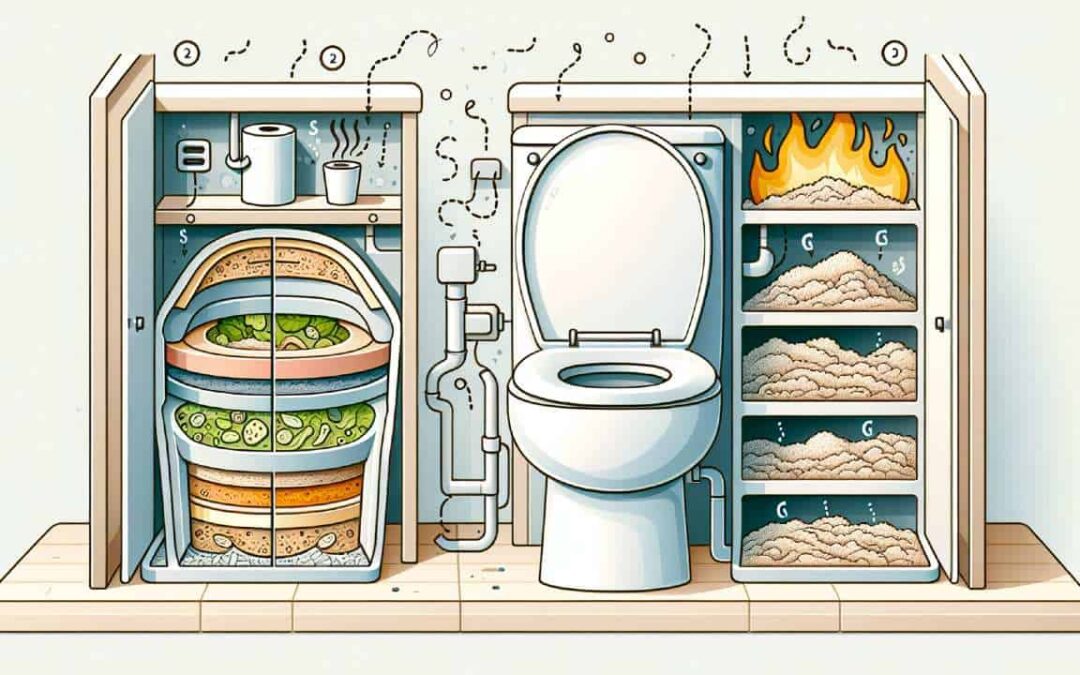Wondering how to empty a composting toilet without the mess? You’re in the right place. This step-by-step guide is designed to help you efficiently manage your composting toilet’s waste. From gathering the right supplies to choosing a safe disposal method, we’ll cover everything you need without any fuss. Expect practical tips to safely and effectively show how to empty a composting toilet of both solid and liquid waste, ensuring your composting toilet remains clean and eco-friendly.
Key Takeaways
Composting toilets are waterless systems that treat human waste through composting, transforming it into nutrient-rich compost, and significantly reduce water usage and greenhouse gas emissions compared to traditional waste management systems.
Emptying a composting toilet requires careful preparation and adherence to safety guidelines, including the use of gloves and appropriate waste disposal practices to prevent environmental contamination.
Regular maintenance of composting toilets is essential and includes managing moisture levels, ensuring proper ventilation, and using environmentally friendly cleaning methods to maintain hygiene and prolong the toilet’s lifespan.
Understanding Composting Toilets
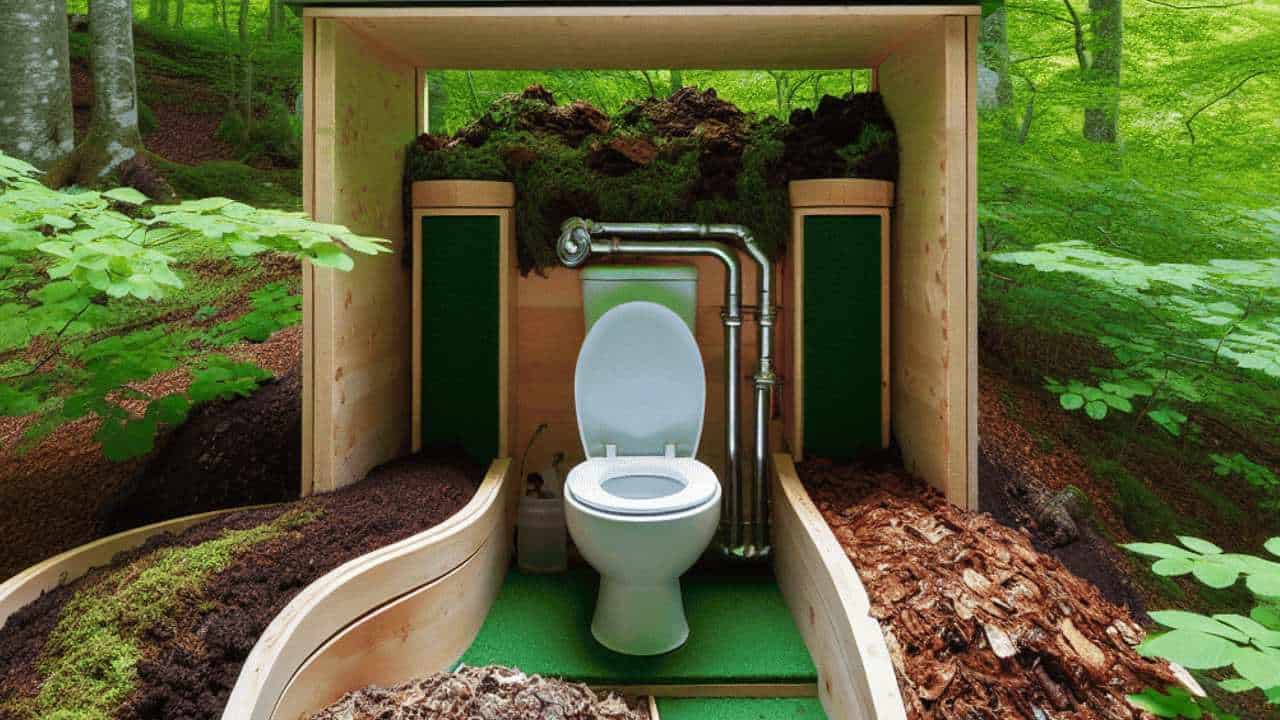
A composting toilet is a type of environmentally-friendly system that treats human waste using a process called composting. Unlike traditional toilets, these systems do not use water to flush away waste, but instead decompose it within the toilet bowl itself. The systems’ key components are the composting chamber, container and collection unit, distinguishing them from pit toilets which simply collect waste in an underground hole.
Composting toilets revolutionize waste management by converting human excrement into usable fertilizer. Before learning about how to dispose of this processed material, it is important to understand their different types and the positive impact they have on the environment. Also, don’t forget to read our blog ‘Composting Toilets: What They Are & How They Work‘ for more insights and detailed information.
Types of Composting Toilets
There are different types of composting toilets, each with its own unique features and methods for emptying. Some models come as a self-contained unit, while others use split-systems, chambers or processors to accommodate various living spaces and usage needs. One common feature among these toilets is the separate collection chamber of liquid waste in a pee bottle.
Composting toilets have gained popularity due to their positive impact on the environment, transforming household waste into nutrient-rich, composted material that can enrich soil and promote healthier plant growth. There are also split-system options available which offer more flexibility when it comes to disposing of waste – such as being able to empty it into your own compost pile on your property, at a park or campground area, or even directly into a trash can if necessary. Regardless of the type chosen though, it’s important for an adult to supervise any process involving handling tools used during disposal so safety standards are maintained along with ensuring proper hygiene practices.
Environmental Benefits
Composting toilets have a larger purpose beyond just waste management. Their role extends to environmental conservation by transforming human waste and urine into useful, composted material for plants and reducing overall water usage. If you have a garden, creating your own compost pile using carbon-rich materials like leaves and straw mixed with nitrogen-rich elements such as grass clippings and vegetable scraps can result in nutrient-dense material that benefits your plants.
But the positive impact of composting toilets goes even further. Compared to other non-sewer waste methods, they greatly reduce greenhouse gas emissions, particularly methane levels, which are known for their harmful effects on the environment. By significantly lowering these emissions, they prove to be an eco-friendly choice for most people when it comes to dealing with waste disposal.
Preparing to Empty Your Composting Toilet

Proper preparation is crucial before emptying a composting toilet. This involves collecting necessary materials and choosing an appropriate waste disposal location.
Safety should always be prioritized when dealing with human waste. It is important to wear gloves, wash hands and clothes thoroughly after handling the toilet’s contents, and consider using protective clothing for solid waste. When selecting a place to dispose of the waste, options such as having your own compost pile on site or utilizing one at a park/campground should be considered first. If these are not available, another alternative could be using a designated other trash can or receptacle.
Gather Supplies
To start emptying your composting toilet, gather all the necessary supplies first. Begin by putting on a pair of gloves – you can opt for compostable ones such as UNNI’s 100% Compostable Food Prep Gloves that can be easily disposed in the compost bin after use. Next, make sure to have trash bags ready to collect and contain the waste material. It is recommended to choose a trash bag size larger than 13 gallons so there is enough space for all of it.
There are parking lot of various options available specifically designed for disposing of waste from composting toilets, including dog poop bags or double bag choices like TRAIL ESSENTIALS Toilet Bags, GREEN ELEPHANT BAG PORTABLE TOILET BLADDERs and Separett Villa & Weekender compatible compostable waste bags.
Don’t forget to have a scraper bag or shovel handy to assist with removing any solid waste present before disposal.
While emptying your composting toilet, don’t forget these key steps: gather all necessary equipment such as disposable gloves, prepare large garbage bags specifically designed for collecting waste, and always have a sturdy plastic bag or container ready for disposal. This process involves handling materials that are part of an eco-friendly waste management system. Therefore, it’s important to handle them with care to avoid disrupting the composting process. Always remember to remove all waste from the liquid chamber and dispose of it responsibly. By adhering to these steps, you ensure a hygienic and environmentally friendly disposal process for your composting toilet.
Choose an Appropriate Location
The proper selection of a location for disposing composting toilet waste is crucial to avoid environmental contamination. Disposing this type of waste incorrectly can lead to the spread of diseases due to pathogens and bacteria. It is essential to choose a disposal site that considers others and avoids densely populated areas.
In order for effective management, solid waste should be taken either at dumping stations or landfills while liquid waste can be emptied at public restrooms. When choosing a spot for composting toilet waste disposal, ensure that it is located more than 200 feet away from any water source. If opting for pit toilets or public bathrooms for liquid dumping, remember not to dump all in one place, but instead distribute evenly as this helps prevent contamination and promotes environmental safety.
Besides safeguarding against potential harm caused by improper handling of organic materials such as those found in toilets, selecting an appropriate disposal location also has positive impacts on the overall environment including reducing landfill use, costs, and carbon emissions. Additionally, it prevents these types of wastes from contributing to greenhouse gas emissions through the process of decompositionanddumpingspreadingout waste rather than being a major factor in safeguarding environmental well-being.
The Emptying Process: Step-by-Step Guide
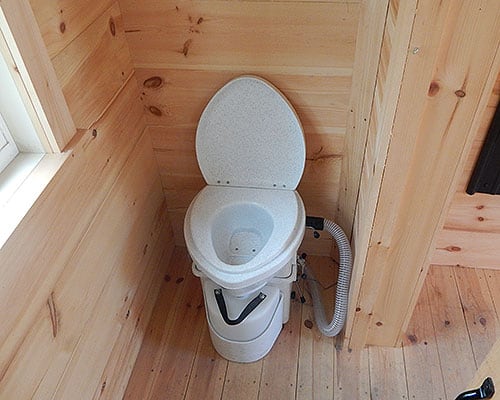
Now comes the moment you’ve been waiting for: getting rid of waste and putting it in your composting toilet. It may seem intimidating, but if you follow these steps carefully, it can be a simple task. Whether dealing with solid or liquid waste, proper preparation and caution are key.
When disposing of solid waste:
Protect yourself by wearing gloves and a dust mask.
Use a scraper to remove any leftover compost from the walls or spindle.
Pour the waste into a trash bag cautiously.
Disconnect the chamber containing solids from the toilet by lifting its lid through the chute meant for disposal.
Have clean buckets ready with cover material to properly manage this type of discarded matter.
As a container for liquid waste, how often it needs emptying depends on usage patterns. However, this is not the case.
Two full-time users should do so about every three weeks.
Finally, it is important to remember that regular maintenance helps ensure optimal functioning of your composting toilet system. As part of this process, set aside some time occasionally to thoroughly clean the various parts and components. In doing so, you will help keep unpleasant odors at bay, and make sure that both solid and liquid waste is disposed of in an effective manner. For best results,follow manufacturer’s instructions for maintaining your specific composting toilet making sure to use approved products only. This will help prevent damageor malfunctions keeping your system running smoothly all year round. Do not underestimate what regular cleaning can do to maintain a comfortable environment in your overall home living space. These methods are straightforward but go along way towards keeping the environment free from overwhelmingodors throughout the year. And after that, you definitely want to breathe fresh air as much as possible while feeling good about yoursustainable choicesregardingecosystemsrecycling through this convenient method.
Emptying Liquid Waste
Properly emptying the liquid waste from a composting toilet requires careful handling and suitable equipment. To start, adult supervision is recommended during this task for safety purposes. Minimize direct contact with the waste by using trash bags as an added precautionary measure. It may also be helpful to consider adding coconut coir to facilitate the process.
The frequency of emptying liquid waste will depend on how often the composting toilet is used, but it’s recommended every three weeks for full-time usage by two people. Factors like non-use can significantly extend this period up to two months if only occasionally used on weekends by two individuals.
When disposing of liquid waste from a composting toilet, make sure you do so responsibly at designated areas such as public restrooms or dump stations specifically designed for such wastes. Adhering to recommended frequencies and following proper safety guidelines not only helps maintain hygiene, but also prevents unpleasant odors and ensures efficient operation of your composting equipment in the long run.
Emptying Solid Waste
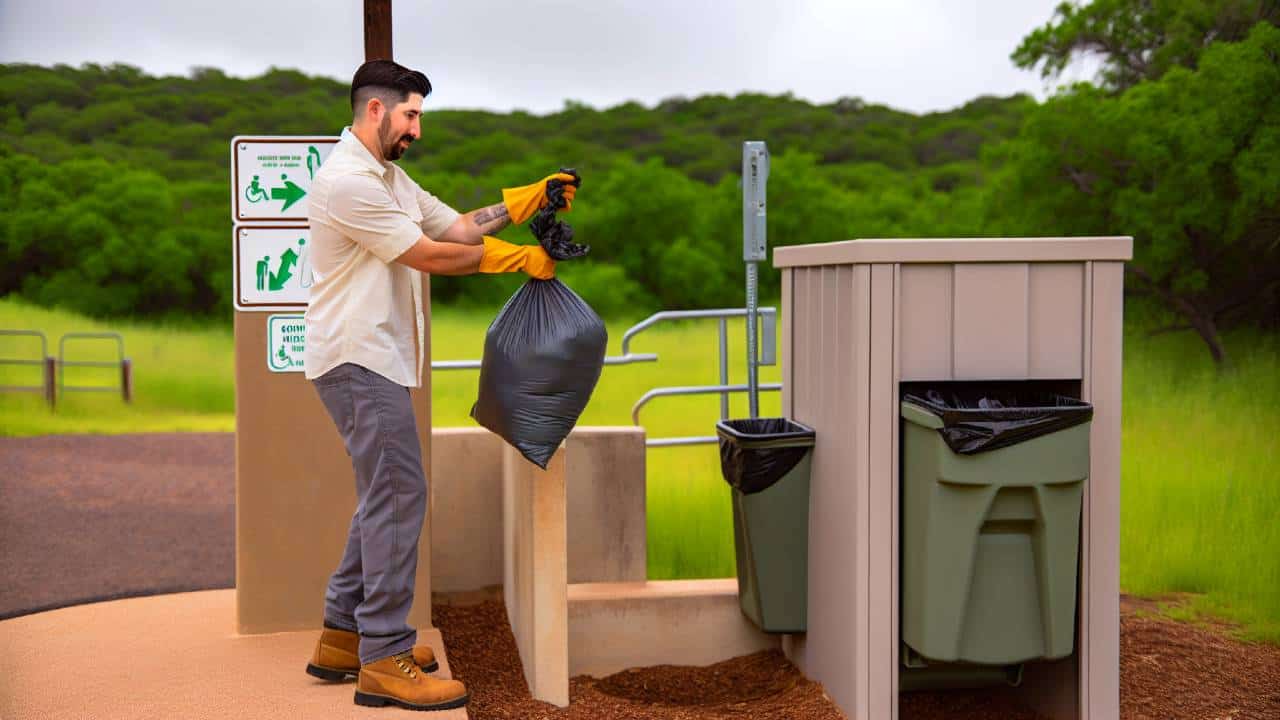
The disposal of solid waste, especially sewage sludge, requires more steps and precautions compared to liquid waste. To ensure safety and hygiene, follow the following guidelines:
Before handling any waste from a composting toilet, put on gloves and a dust mask.
Use a scraper to remove any remaining compost stuck on the walls or spindle of the toilet.
Carefully transfer the collected waste into a trash bag.
Do consider using specialized human wastebags (also known as wag bags) which are available in odorproof, leakproof,and biodegradable options for optimal results.
Depending on local regulations and personal preference, you can either take this properly bagged, waste to an assigned dump site or add it to your own home compost pile. However, before disposing, wearing protective gear,maintaining proper ventilation, and ensuring that all solids are contained within sealed bags is important regardless of the method chosen. Ensuring these recommendations will result in hygienic, trouble free, long-term recycling solution through effective use of appropriate equipment be it via processed manually,human-powered techniques rather than relying upon chemical treatments when processing oversized wastes.
Safe Disposal Options for Composting Toilet Waste
After the emptying process of your composting toilet, it is important to properly dispose of the waste. This can be done through designated dump sites or a home compost pile. Both options have their own advantages and factors to consider before making a decision.
Designated dump sites follow specific regulations for managing waste while a home compost pile allows you to recycle organic matter into nutrient-rich fertilizer for gardening use. Regardless of which method is chosen, responsible disposal is crucial in preventing harm to the environment and adhering to local laws governing waste management practices.
Designated dump sites
Dump stations are specialized facilities that handle and manage waste in a responsible manner. They strictly adhere to protocols and regulations to ensure the safe management of waste without causing harm to the environment. To find designated dump station sites near you, search for specific locations or consult resources listing free dumping options in your area.
It is important to follow certain rules when using these dump sites. These may include properly identifying and labeling all containers used for disposal, adhering to guidelines for classifying and profiling waste materials, regularly scheduling pick-ups of dumped items in order prevent accumulation at the site, as well as paying fees associated with utilizing these services.
Before choosing a dump station service provider, be sure inquire about their pricing structure beforehand so there are no surprises later on.
Home compost piles
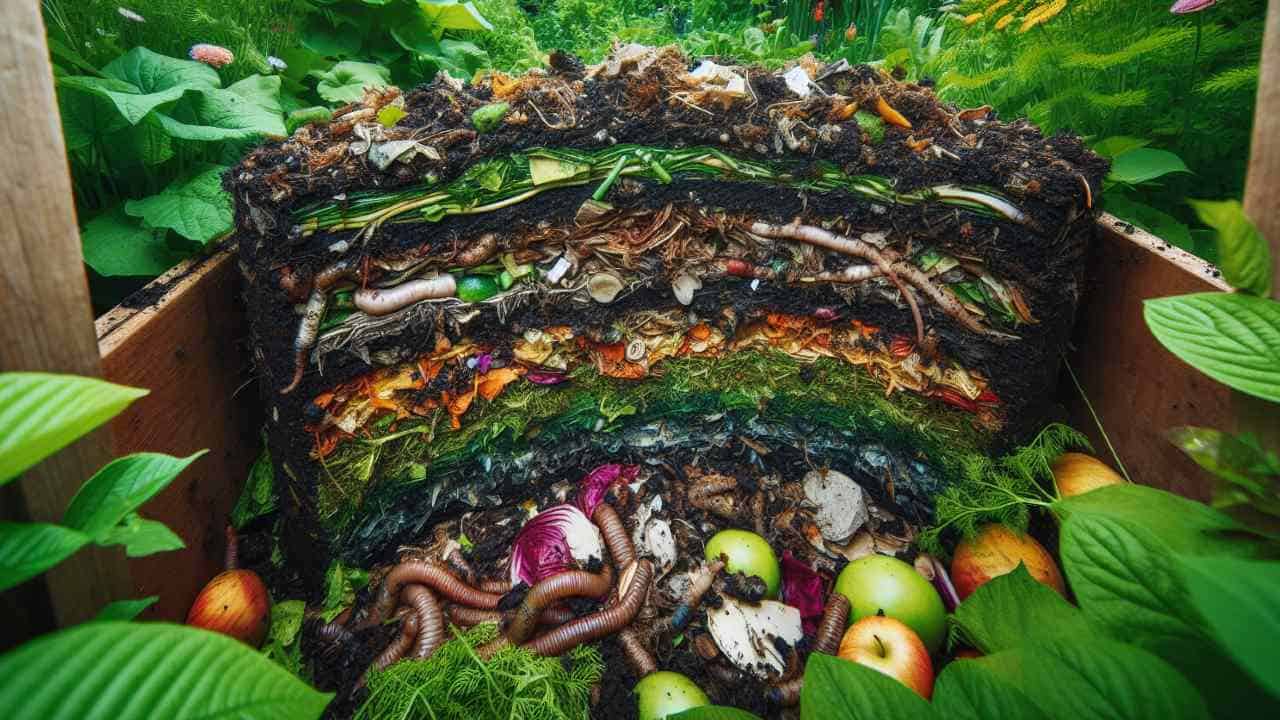
For those who enjoy gardening, utilizing a home compost pile is an excellent choice for managing waste from a composting toilet. It offers the convenience of recycling contents into nutrient-rich soil that can enhance your garden’s fertility and promote plant growth.
To incorporate composting toilet waste into your garden and home compost pile:
Enclose the material with natural soil or manure.
Moisturize it to initiate the decomposition process.
- This method not only helps effectively manage waste but also introduces beneficial microbes edible plants and nutrients to improve soil health in your garden.
Tips for maintaining your composting toilet
Proper maintenance is essential for a composting toilet, as it ensures efficient decomposition of waste, controls odors and prolongs its lifespan. Aside from knowing how to empty the compost toilet correctly, regular maintenance tasks include cleaning both inside and outside with mild detergent or diluted white vinegar. Sprinkling ashes or powdered soil around the squatting hole weekly can also help in decomposing waste effectively.
To this, proper care involves regularly cleaning the urine diverter tank, bottle and seat using pure vinegar. It’s recommended to remove and clean filters yearly (or when disposing of solid wastes). Adequate ventilation must also be checked periodically so that air is flowing efficiently to aid in drying solids.
Lastly, maintaining good moisture levels within the system by adding dry materials like sawdust along with checking on airflow are crucial steps towards keeping your composting toilet running smoothly. By following these practices diligently, you not only ensure an odor-free experience, but also maximize its longevity while contributing positively towards creating rich compost material.
Ventilation and moisture control
Proper ventilation is crucial for the upkeep of a composting toilet. It serves to draw unpleasant odors down from the toilet bowl, through its compartments and ultimately out of service lid via an external vent. It aids in air circulation, which expedites drying of solid waste. Regularly checking and maintaining the ventilation system ensures proper airflow.
Managing moisture levels is also vital when maintaining a composting toilet. To effectively control moisture:
Close lid after use.
Monitor moisture levels regularly.
Prevent excessive condensation.
In arid regions, add some water to balance out dryness.
Utilizing absorbent materials such as coco coir can help soak up excess dampness.
The recommended amount of humidity for effective composting ranges between 50% -60%, while too much wetness may hinder decomposition and create unappealing smells. In conclusion, ventilation plays a critical role in keeping a functional composting process running smoothly within your sanitation unit. It helps eliminate odor, boosts air movement, and reduces surface saturation. However, it’s equally essential.
Regular maintenance
Regular maintenance is crucial for increasing the lifespan and optimizing performance of your composting toilet. It is recommended to clean it at least once a week, or no more than every 3-4 weeks, using environmentally-friendly products such as soaps, pure vinegar, homemade detergents with vinegar, or liquid citric acid. These can effectively sanitize your composting toilet contents while being gentle on the environment.
To properly maintain your composting toilet system, you will need certain tools including Nature Flush Enzymes (or similar cleaners), bottle brushes or scrub sponges for cleaning purposes, a lid to cover the tank opening when not in use, and Compost Quick solution specifically designed for cleaning the drum screen and evaporation chamber. Additionally, it’s important to regularly check and clean the ventilation system, to inspect and ensure proper operation of the inlet air screens and fan, and to lift any sagging areas in the vent hose that may obstruct drainage back into the tank. Incorporating these tasks into your regular maintenance routine will assist in maintaining a hygienic composting toilet with effective odor control and reducing the risk of malfunction.
Best composting toilet
Composting toilets serve as an effective and eco-friendly answer to waste management. When picking out the perfect composting toilet, it’s important to weigh factors such as its capacity, user-friendliness, and odor control. Here are some of the top contenders in the market, renowned for their efficiency and ease of use:
Sun-Mar Excel Non-Electric Self-Contained Composting Toilet
Each of these composting toilets brings a unique set of features to the table, catering to a wide range of needs and preferences. Whether you’re in search of a compact model or a solution designed for larger households, these composting toilets stand out as some of the best options for a sustainable and efficient waste management solution. For a more in-depth understanding and insights, don’t forget to check out our comprehensive guide on the best composting toilets.
Summary
Composting toilets offer a great alternative to traditional ones, providing notable environmental advantages such as water preservation and waste reduction. There are different types available, each with its own features and methods for emptying. Although it may seem overwhelming at first, properly preparing and following a step-by-step guide can make the process of emptying composting toilets simple. Whether you choose to dispose of the waste at an approved dumpster or site or in your home compost pile, responsibility is key to avoid causing harm to the environment. Regularly maintaining your composting toilet by ensuring proper ventilation, controlling moisture levels, and cleaning will promote efficient decomposition of waste while keeping odors under control and prolongs its lifespan.
Frequently Asked Questions
How do you dump a composting toilet?
Disposing of a composting toilet’s waste can be done in several ways, such as placing it into a compost pile at designated areas like parks or campgrounds. Alternatively, you may also choose to use either plastic or biodegradable bags and dispose of them in the nearest trash receptacle. Lastly, another option is burying the waste on site.
How often do you empty composting toilet?
For household use, it is recommended to empty a composting toilet once every month. If the toilet is being used infrequently in a weekend cabin setting, it can be emptied just once per season. Knowing this information could potentially influence your decision whether or not to invest in a composting toilet for your home or vacation property.
Is it gross to empty a composting toilet?
Emptying a composting toilet is not as gross as it seems, with minimal upkeep and only occasional emptying required. You don’t need fancy tools or skills to handle the job.
How does a composting toilet work?
The process of composting toilets involves the breakdown of solid waste through a biological decomposition process. To create an ideal environment for decomposition, waste is mixed with a bulking agent such as wood shavings and kept warm and moist.
Once fully broken down, this material can be used as nutrient-rich compost to enhance soil quality. Composting toilets are specifically designed to efficiently convert human waste into useful organic matter that benefits both the ecosystem and agricultural practices.
What is a composting toilet?
A composting toilet is a type of dry sanitation system that utilizes the process of composting to break down and decompose human waste. This form of treatment effectively eliminates and treats waste without any use of water or chemicals commonly found in traditional toilets. The biological process involved in this method results in the biological process.
